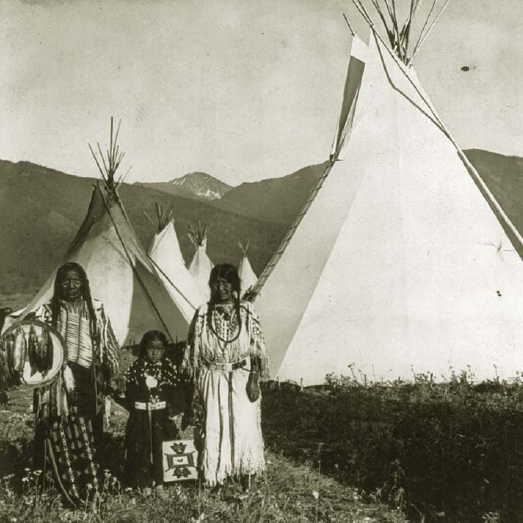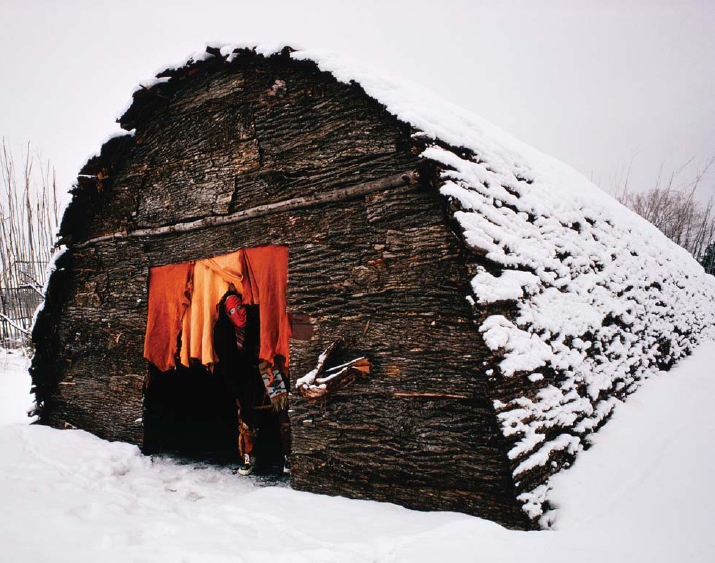
This photograph from the 19th century shows a Native American family of the Plains outside of their home.
Families are the building blocks of society. Thus, it is no wonder that Native American societies of the past and present revolve around the family. Traditionally, Native American family ties are traced through blood relationships, clans, bands, and tribes. Sometimes, adoptions establish family ties.
The varying family structures of Native Americans are quite complex. There are nuclear and extended Native American families. A nuclear family, or one generational family, is composed of a mother, father, and their children. An extended family is composed of two or more generations of a family living together.
Clans are another form of Native American families. A totem or a common ancestor generally links a clan. Clan traditions, customs, and organizational patterns vary greatly from region to region and people to people.

This photograph from the 19th century shows a Native American family of the Plains outside of their home.
Obviously, Native American family life is a broad and complicated subject. The following chapters of this book will look at some of the different aspects of the family lifestyles of select groups of pre-Columbian and early-contact Native American cultures. These groups have been chosen to provide a representation of the differing lifestyles of pre-Columbian and early-contact Native American families throughout the Americas.
In this book, the past tense is used not to suggest that Native American families are a thing of the past. It is used solely to signify that these family descriptions are referring to Native American families from pre-European contact to early-European contact periods.
To learn more about Native American families, the author recommends that you study in greater depth the family structures, traditions, and customs of individual tribes. Keep in mind that no two families are exactly alike. This applies to Native American families, just as it does to all other families. It is important to note that while the families of the cultural regions depicted in this book shared many things in common, they were also vastly different in many ways. §

A shaman wearing a mask peers through the doorway of an Iroquois longhouse. When the first French and English settlers arrived in northeastern North America during the early 17th century the Iroquois Nation—actually a group of tribes that included the Onondaga, Mohawk, Seneca, Oneida, Cayuga, and Tuscarora tribes—controlled much of the region.